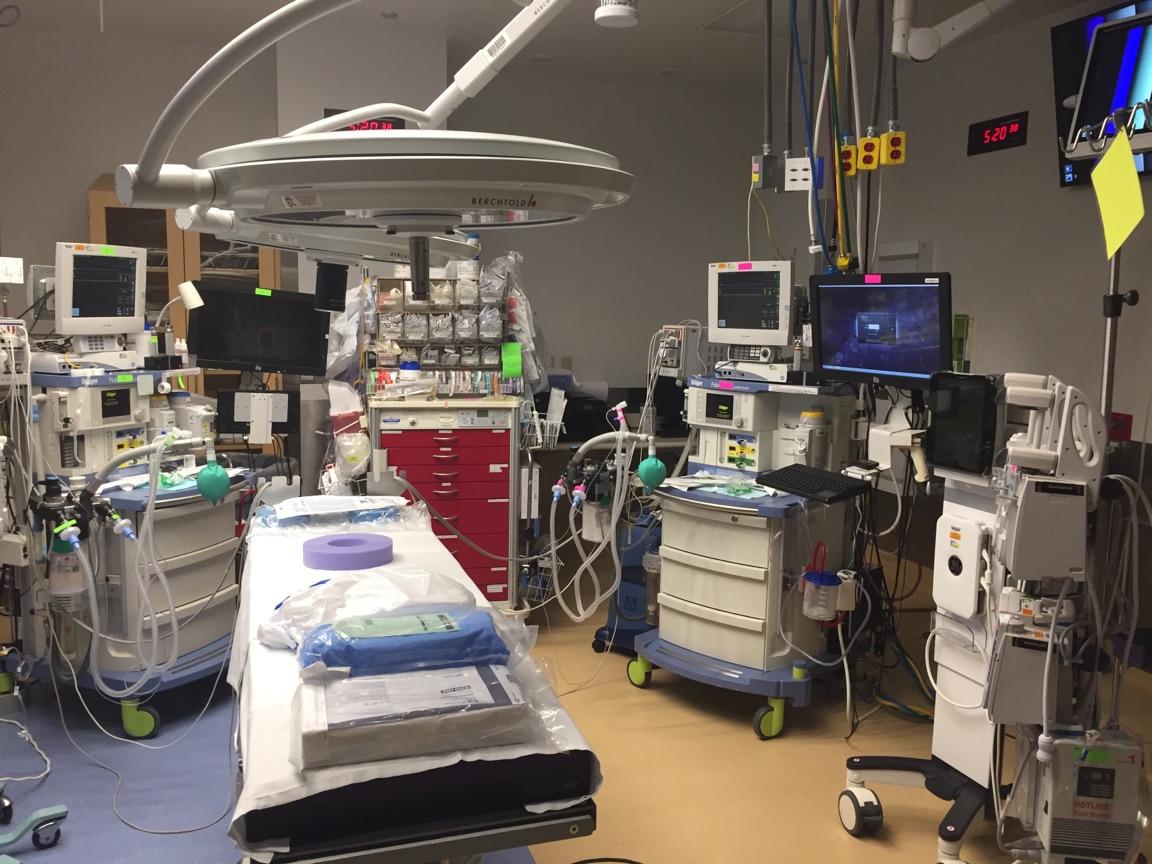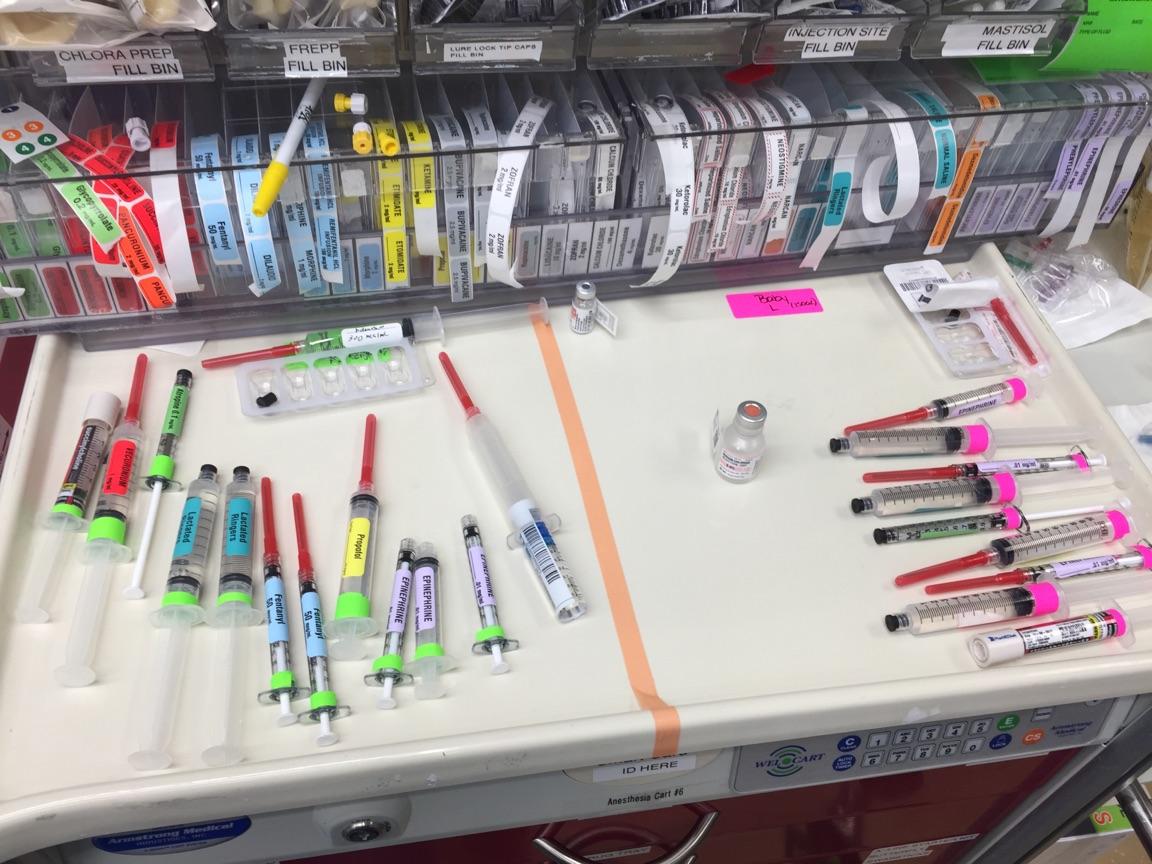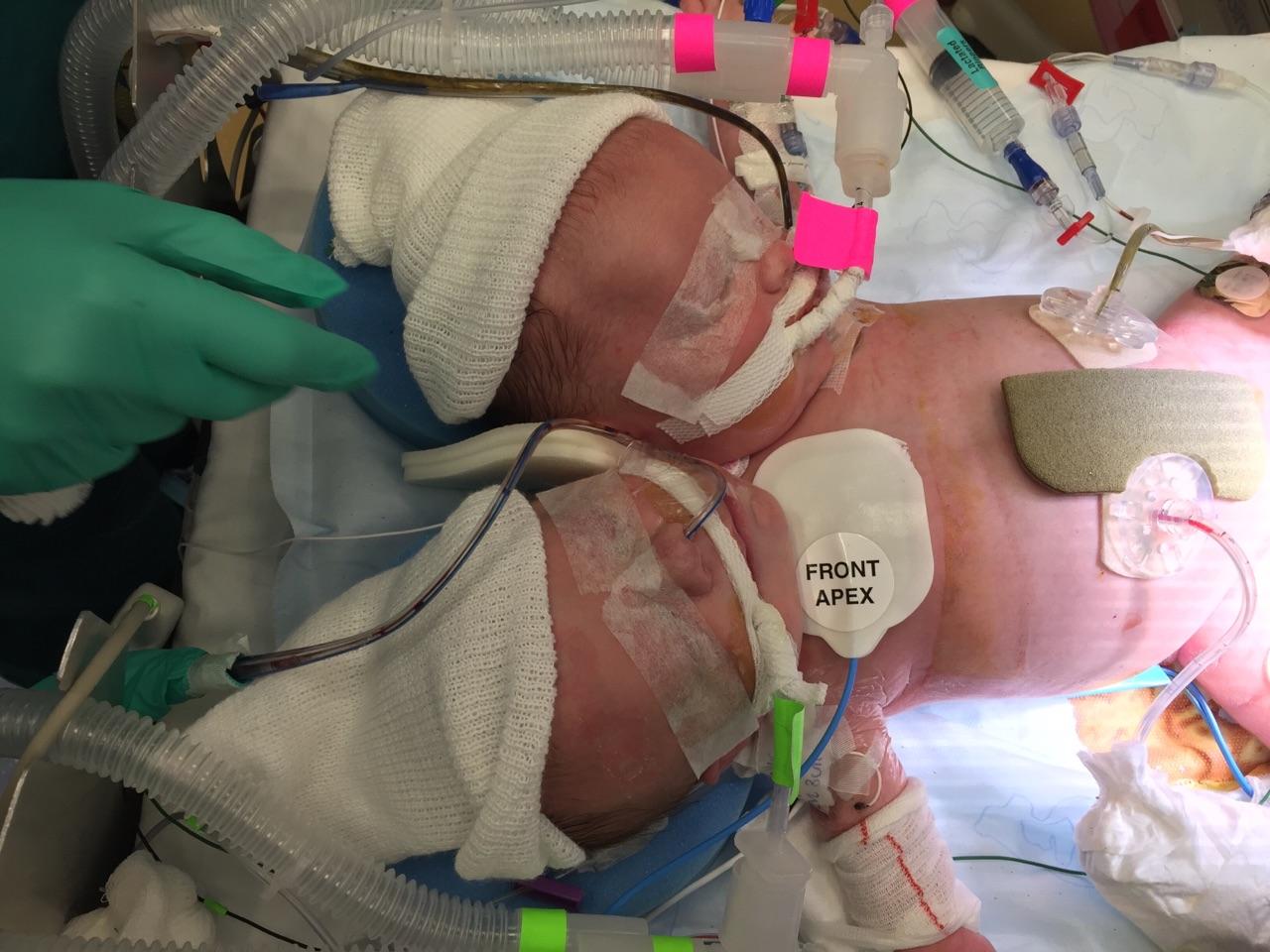CR2-182
Perioperative Management of two week old male mono-mono thoraco-omphalpagus dicephalus conjoined twins for repair of omphalocele and congenital diaphragmatic hernia
Weaver R, Welsh S, Lim F, Varughese A, Mahmoud M
Cincinnati Children's Hospital Medical Center, Cincinnati, OH, United states
After a successful C-section, a 5 Kg pair of mono-mono thoraco-omphalpagus dicephalus conjoined twins were born at 36 2/7 weeks gestation. The twins share a descending aorta and IVC. Twin A’s cardiac ECHO showed congenital heart disease with AV canal, double outlet right ventricle, and pulmonary stenosis with balanced circulation and a history of SVT, stable on propranolol at the time of the operation. Both twins have respiratory failure requiring intubation at birth, congenital diaphragmatic hernia with Twin A’s stomach in medial portion of shared thorax, and omphalocele with obstruction. Twin B exhibited worsening pulmonary hypertension with increased oxygenation requirements in the 24 hours prior to the operation.
One day prior to the planned procedure, all members of the multidisciplinary team including nursing, anesthesiology, and general surgery met in the designated operating room to discuss the plan for layout of theatre, control of traffic in, and transport to operating room, blood loss, monitoring, positioning, color-coding for each twin (Twin A was green, Twin B was pink), and action plan for potential complications. Given the nature of the patients, two anesthesiology teams were involved, with an attending and fellow comprising each anesthetic team. The concern of balancing the respiratory requirements of each twins with significant circulatory mixing was also discussed in detail during preparation for the procedure. Two ventilators were used with significantly different settings, catered by each anesthetic team to the need of the respect twin being cared for, with much communication being required given different FiO2 settings and significant circulator mixing between the twins. Repair of the CDH and omphalocele with placement of a percutaneous gastric tube in each twin’s stomach proceeded without complications or delays. Successful management of conjoined twins procedures relies on close communication, cooperation, and extensive preparation for the planned procedure.
Top














